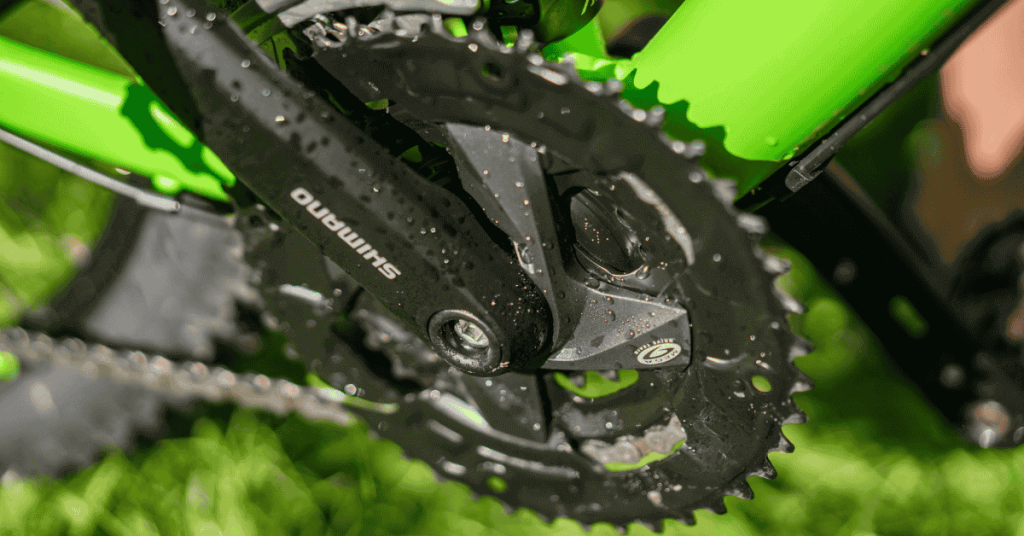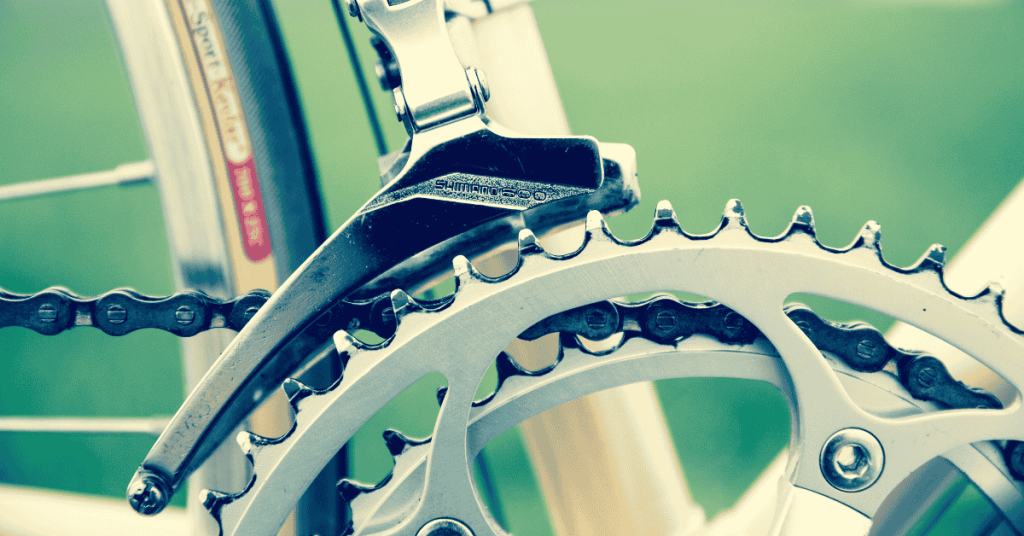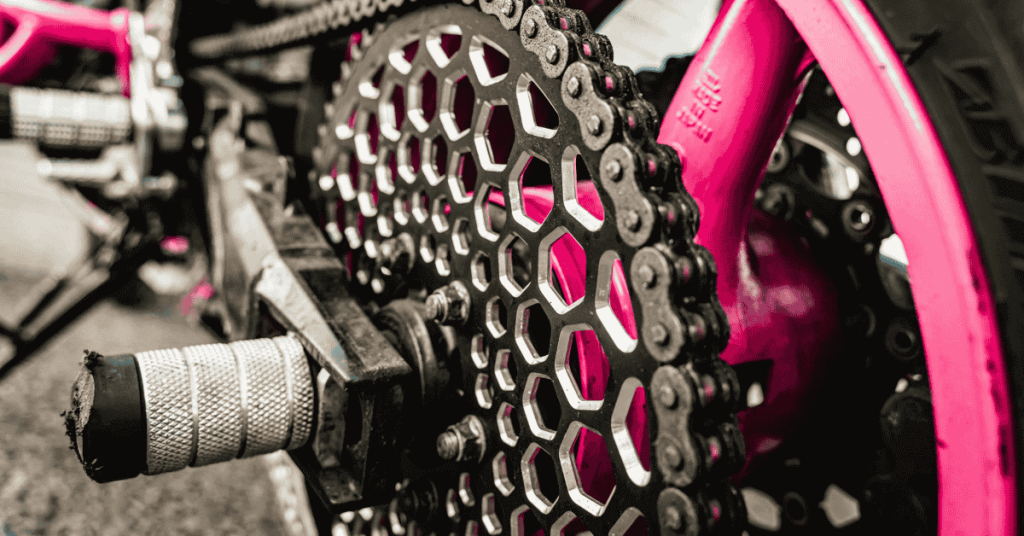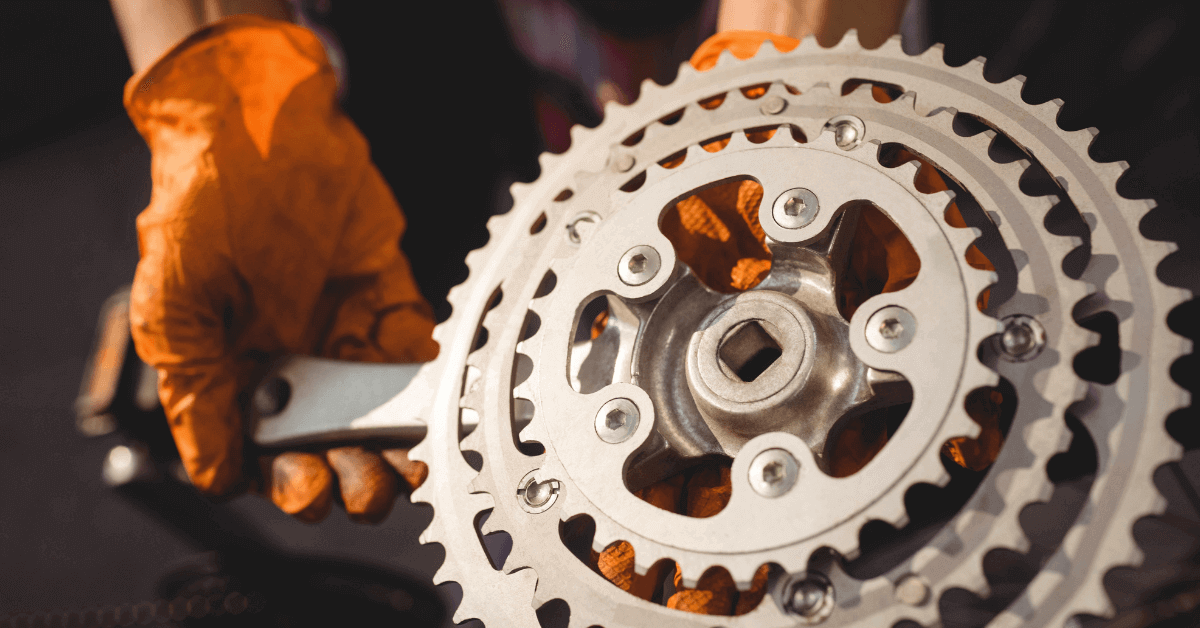Removing bike crank arms without a puller can seem tricky at first, but it’s entirely doable with a few tools and patience. But don’t worry—it’s entirely possible to remove a bicycle crank without a puller using just a few basic tools and some patience. Whether you’re tackling a repair, upgrading your bike components, or simply doing some routine maintenance, learning how to remove a bicycle crank without a puller can save you both time and money. In this guide, we’ll walk you through the process step-by-step, offering tips and tricks to make the job easier. Let’s dive in!
 Why You Might Need to Remove a Bicycle Crank Without a Puller
Why You Might Need to Remove a Bicycle Crank Without a Puller
Even without a puller tool, there are many reasons you may have to remove your bicycle crank. Here are some situations in which this is common:
- Crank set Replacement: When your crankset is damaged or worn out, you must first remove it to replace it with a new one.
- For Cleaning or Replacing the Bottom Bracket: Over time dirt, grim, and even rust builds up around the bottom bracket enough to require that the crank arm be removed for proper cleaning or replacement.
- Crank Upgrades: Many cyclists simply want to replace their crank set with a lighter, more efficient or better looking component.
- Fixing Mechanical Issues: If your crank arm is loose or damaged, it needs to be removed for repairs or replacement.
Whatever the reason, the fact that you know how to remove a bicycle crank without a puller solves a huge problem and saves you from the cost of a mechanic.
Tools You’ll Need to Remove a Crank from Your Bike Without a Puller
Before starting, be certain that you have the necessary tools for the trade. Although most people use a crank pulling tool, it is not absolutely necessary in order to remove the crank from the bike; there are a number of other tools and constructs you can use. Here’s what you’ll need:
- Allen Wrenches or Socket Wrench Set: Crank arms are usually bolted on and require Allen wrenches (generally 8mm) or a socket wrench to remove them.
- Rubber Mallet or Hammer: You are going to need a mallet to tap the crank arm off the spindle.
- WD-40 or Lubricant: To loosen any rust or debris that may be keeping the crank arm stuck.
- Pedal Wrench: For removing the pedals before trying to remove the crank.
- Heat Gun or Hairdryer (Optional): Can help loosen stuck or rusted crank arms.
- Rubber Gloves (Optional): For keeping your hands clean and grease-free.
Armed with these tools, you are ready to go!
 Step-by-Step Guide: How to Remove a Bicycle Crank Without a Puller
Step-by-Step Guide: How to Remove a Bicycle Crank Without a Puller
Taking a crank off without a crank puller is actually quite easy when thought out step by step. Watch closely how things are done so that you don’t get stuck with your crank arm.
Step 1: Getting Your Bike Ready to Remove the Crank
So, before you start the process to remove your cranks, here’s how to position your bike in the most stable, as well as safe position:
- Get the Bike Ready: Put the bike in a work stand or flip it upside down onto a soft surface. This will facilitate working on the cranks.
- Make Sure the Bike Doesn’t Tip: Make sure the bike is not in danger of falling over on you while you work on it.
Step 2: Remove the Pedals
There are pedals that have to be removed before removing the crank itself. Here’s how:
- 15mm Pedal Wrench: The pedals have right- and left-hand threads, so know which way to go:
- Right Pedal (Drive Side): Turn counter clockwise to remove.
- Left Pedal (Non-Drive Side): Turn clockwise to loosen.
- Apply Lubricant: In case the pedals are stuck, spray them with a bit of WD-40 or lubricant and wait a few minutes for the stuck pedals to loosen.
Taking the pedals off is an important first step to make it easier to access the crank arms.
Step 3: Loosen and remove the crank bolts
After removing the pedals, it needs to loosen the bolts which are fastens the crank arms with bottom bracket. Here’s how:
- Locate the Crank Bolts: Some crank arms have one or two bolts at the inside of the arm near the pedal spindle.
- Find the Right Tool: You’ll need an Allen wrench (often 8mm) or a socket wrench to loosen the bolts that attach the crank arms, depending on your bike.
- Lubricate: Put some WD-40 on any bolts that are stuckesener and leave them for a few minutes before trying to unscrew them.
After you unscrew the crank bolts, you can proceed to the next stage: loosening the crank arm from the spindle.
Step 4: Add heat (if necessary)
If you are suffering a stuck crank arm from rust or corrosion, heat might do the trick! Here’s how to do it safely:
- Heat Gun or Hairdryer: A heat source focused on the crank arm for 2-3 minutes. Key in on the interface of the crank arm and the spindle.
- Be Mindful: Do not overheat the crank arm or bottom bracket, there is potential damage with this process.
The heat will cause the metal to expand just enough to free up the crank arm from the spindle.
Step 5: Where the Crank arm meets the Bottom Bracket48
Once you’ve loosened the bolts and maybe also applied heat, you can proceed to gently tap the crank arm off the spindle:
- Beat with a Rubber Mallet or Hammer: Lightly with a rubber mallet, tap the crank arm. You need to strike the outer part of the crank arm; you don’t want to hit the bolts or spindle.
- Give It a Firm But Gentle Tap: Tap a few times to start moving the crank arm. If it doesn’t come loose immediately, tap a little harder, but not so hard that you’ll damage the crank or bottom bracket.
If the crank arm still doesn’t budge after several taps, you might need to add additional lubricant or heat it and repeat the process.
Step 6: How to Remove the Crank Arm Without a Puller
Once you have loosened the crank arm, gently pull it off the spindle. Wiggle it side-to-side as you pull to avoid stripping threads. As a last resort, you may wish to use a crank puller if it still gets stuck.
 What to Do If Your Crank Is Stuck: Tips on How to Fix
What to Do If Your Crank Is Stuck: Tips on How to Fix
In some cases, no matter how many blows you deliver, the crank arm will refuse to budge. Here’s what you can do:
- Use a Crank Puller: As this article is about how to remove a bicycle crank without a puller, a puller will make your life much easier if you have one. Crank pullers are purpose-made tools for removing cranks without damaging anything.
- Use a Pulling Method of Your Own Making: Some cyclists have gotten creative using a bolt and washer to help lever the crank arm off. This step should be taken with caution, as doing it incorrectly could mess up the crank.
- Take it to a bike mechanic: If everything else fails, it may be best to take your bike to a mechanic. Will crank arms be stuck too, you wonder, and do professionals have the tools and expertise for safely removing crank arms?
How to Avoid Common Issues When Removing Your Bicycle Crank
It’s much easier to avoid issues before you pull cranks than it is to fix them afterward. Here are a few tips for steering clear of issues:
- Regular Maintenance: Clean and lubricate your crank arms and bottom bracket regularly to prevent rust and corrosion. This will make future removal much easier.
- Correct Installation: Do not crank the bolts hard when placing the crank arm again. If you overtighten the bolts, the crank can seize up, so they can be difficult to remove later.
- Anti-Seize Grease: Put some anti-seize grease on the crank arm bolt threads, as this will help avoid crank bolts seizing up and help out for your future service.
Alternative Methods to Remove a Bicycle Crank Without a Puller
If you don’t have a puller and none of the above methods are working, here are some additional approaches to try:
- With a large bolt and washer: Some cyclists use a bolt and washer (mounted onto the crank arm) to pull. Screw the bolt into the threaded hole in the crank arm and tighten it to pull the crank off the spindle.
- Using a DIY Crank Puller: A teeth crank puller can be made through some tools. Keep in mind that this method is not advisable for anyone without a high level of technical skill because it has to be done precisely.
Summary: Bike Crank Removal Instructions Without a Puller
Finally, knowing how to remove a bicycle crank without a puller is a valuable skill every cyclist should have if they want to maintain or upgrade their wheels. You do not need any special tools to remove this part of your bike, and these steps—from preparing your bike up to and including removing the pedals, loosening the crank side bolts, and through gently tapping the crank arm a couple of times with a mallet—will help you do so. Heat, lubricant application, and careful handling of the components are all essential to achieving a smooth removal process without damage.
Although this task is fairly easy with the proper methodology, it takes patience and moderate force to prevent damage to the crank, bottom bracket, or adjacent components. Routine maintenance like cleaning and lubricating the crank arms will prevent future failures; and let the next crank removal be easier and faster. By mastering
Read Next…
Best regards,
~Team BikeBicycler
